Vous êtes ici : Accueil › Impact of slope gradient on soil surface features and infiltration on steep slopes in northern Laos
Impact of slope gradient on soil surface features and infiltration on steep slopes in northern Laos
Publication issue des travaux du projet PASTEK.
Résumé en anglais
Impact of slope gradient on soil surface features and infiltration on steep slopes in northern Laos
It was recently demonstrated that, infiltration into mountain-tilled soils with highly stable microaggregates, increases with increasing slope gradient. In this work we investigate the processes that underpin this phenomenon by means of field experiments and modelling. The study area is located in northern Laos. Rainfall simulations were conducted in two 1-m2 plots using a portable field simulator. The drop size distribution and kinetic energy were similar to that occurring on the occasion of tropical downpours. Soils exhibited a clay loam texture and very similar organic matter contents across experimental plots, but differed greatly in slope gradient (30% and 75%). Runoff water samples were collected at intervals ranging from 1 to 3 min, depending on the runoff intensity. Plots microtopography was measured before and after rainfall simulations using an automatic surface roughness meter on a 1-cm grid. High-resolution bulk density images were obtained from soil slices using a standard X-ray generator. Final infiltration rates of 6 and 21 mm h−1; soil detachment of 667 and 310 g m−2; surface lowering due to soil loss of 0.82 and 0.38 mm; surface lowering due to compaction of 1.21 and 0.90 mm; percentage area with sieving crust of 36% and 90%; percentage area with erosion crust of 63% and 0%; were obtained for the 30% and 75% slopes, respectively. Three main conclusions can be drawn from this work: (1) high intensity rainfall can rapidly transform soil surface features of steep bare soil; (2) on steeper slopes, the micro-relief tends to form micro-terraces much more pervious and less erodible than the ripple-like roughness that formed on gentler slopes; and (3) there was a more pronounced lowering of the soil surface due to compaction and denser microlayers on gentler slopes. The latter conclusion confirms the hypothesis that higher effective rainfall intensity is responsible for the formation of less permeable erosion crusts under 30% slope gradients while more permeable structural crusts develop under 75% slope gradients. The runoff results were modelled with the Green and Ampt model which accounts for time evolution of soil hydraulic conductivity. This modelling shows that soil is undoubtedly non homogeneous, evolves with time and that infiltration kinetics is slower and soil permeability greater for the 75% slope.
Ribolzi et coll.; Geomorphology; 127 : 53-63 ; 2011







